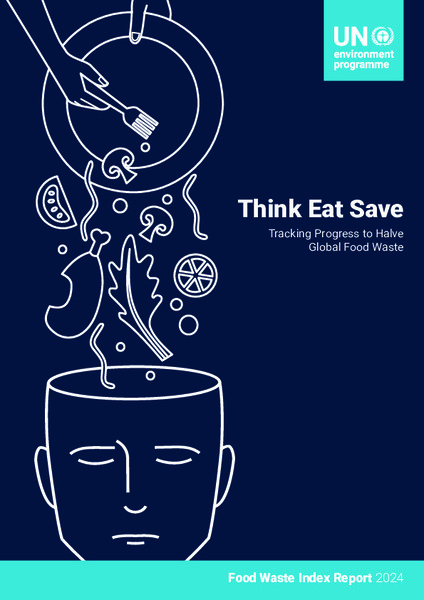| dc.contributor | Industry and Economy Division | en_US |
| dc.contributor.author | United Nations Environment Programme | en_US |
| dc.contributor.other | Forbes, Hamish | en_US |
| dc.contributor.other | Peacock, Eloise | en_US |
| dc.contributor.other | Abbot, Nettie | en_US |
| dc.contributor.other | Jones, Michael | en_US |
| dc.coverage.spatial | Latin America and the Caribbean | en_US |
| dc.coverage.spatial | Asia and the Pacific | en_US |
| dc.coverage.spatial | Africa | en_US |
| dc.coverage.spatial | Europe | en_US |
| dc.coverage.spatial | North America | en_US |
| dc.coverage.spatial | Western Asia | |
| dc.date.accessioned | 2024-03-21T07:16:21Z | |
| dc.date.available | 2024-03-21T07:16:21Z | |
| dc.date.issued | 2024-03 | |
| dc.identifier.isbn | 978-92-807-4139-1 | |
| dc.identifier.other | DTI/2629/NA | |
| dc.identifier.uri | https://wedocs.unep.org/20.500.11822/45230 | |
| dc.description | To galvanize the necessary action on food waste reduction to achieve SDG 12.3, it is crucial to understand how much food waste there is. Measuring food waste enables countries to understand the scale of the problem – and therefore, the size of the opportunity – while providing a baseline against which progress can be measured. The Food Waste Index Report 2021 was an important moment in the understanding of food waste at the retail, food service and household sectors globally. It demonstrated higher global availability of food waste data than expected, particularly at the household level, and that per capita household food waste generation was more comparable across the world than was previously understood.
This Food Waste Index Report 2024 builds on the 2021 report in three ways:
1) New data has been used to develop a new estimate of global food waste. This is covered in chapter 2 of the main report.
2) This report builds on the SDG 12.3 food waste measurement methodology published in the Food Waste Index Report 2021, providing more detailed guidance on measurement at the retail, food service and household sectors. The additional guidance explores different methodologies, their strengths and limitations and how to effectively prioritize subsectors for measurement. This is covered in chapter 3.
3) The report starts to move from food waste measurement to food waste reduction. The “Solutions Focus” chapter explores effective approaches to food waste reduction around the world. This 2024 report spotlights public-private partnerships for reducing food loss and waste. Subsequent Food Waste Index reports will explore other leading approaches and food waste solutions. This is covered in chapter 4. | en_US |
| dc.format | pdf | en_US |
| dc.language | English | en_US |
| dc.language | Portuguese | |
| dc.language | Spanish | |
| dc.rights | Public | en_US |
| dc.subject | food waste | en_US |
| dc.subject | food loss | en_US |
| dc.subject | public-private partnership | en_US |
| dc.subject | Latin America and the Caribbean | en_US |
| dc.subject | Southwest Asia | en_US |
| dc.subject | Africa | en_US |
| dc.subject | Asia and the Pacific | en_US |
| dc.subject | Europe | en_US |
| dc.subject | North America | en_US |
| dc.title | Food Waste Index Report 2024. Think Eat Save: Tracking Progress to Halve Global Food Waste | en_US |
| dc.type | Publications | en_US |
| dc.type | Technical Reports | en_US |
| wd.topics | Finance and Economic Transformations | en_US |
| dc.relation.TableOfContents | 1 Introduction | en_US |
| dc.relation.TableOfContents | 2 Index level 1: Existing data and extrapolation to other countries | en_US |
| dc.relation.TableOfContents | 3 Index levels 2 and 3: Measuring food waste at the national level | en_US |
| dc.relation.TableOfContents | 4 Solutions focus: Public-private partnerships | en_US |
| dc.relation.TableOfContents | 5 Conclusion | en_US |




